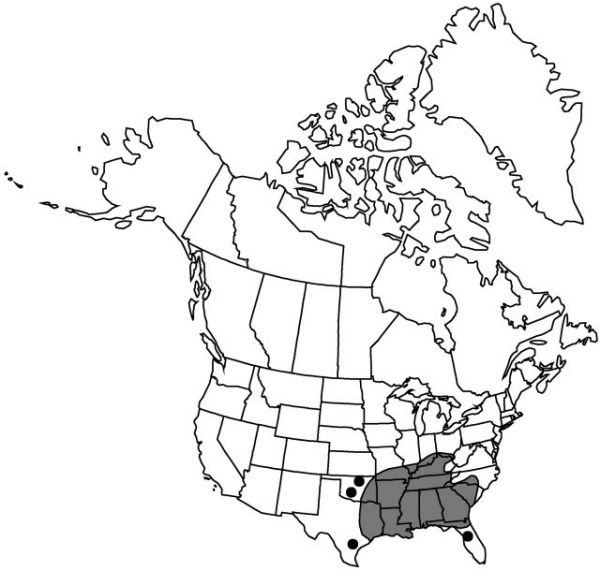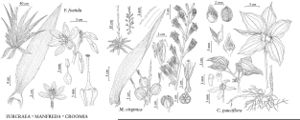Manfreda virginica
Contr. U.S. Natl. Herb. 8: 19. 1903.
Rhizomes cylindrical. Leaves spreading, semisucculent, 8–40 (–47) × 0.5–6.5 (–9.3) cm; blade usually spotted or speckled with maroon, shallowly channeled, oblanceolate to linearlanceolate, margins entire or with cartilaginous prickles. Scape 4.5 13.8 dm. Inflorescences 14–68 cm, bearing 10–61 closely spaced flowers. Flowers sessile or pedicellate, nearly erect, slender, with sweet, fruity odor; tepals green; perianth-tube 0.9–2.3 × 0.3–0.6 cm; limb lobes erect, 0.4–0.8 cm; filaments inserted near base of tube, bent in bud, exceeding tube by 1.2–3.1 cm; ovary 4–10 mm; style shorter than stamens, exceeding tube by 0.6–2.3 cm; stigma white, 3-lobed, lobes reflexed. Capsules globose, 1–1.7 cm diam. 2n = 60.
Phenology: Flowering summer–late summer, rarely in spring; fruiting late summer–early fall.
Habitat: Glades and open woods, on rocky and sandy soils, often on slopes
Elevation: 0–600 m
Distribution

Ala., Ark., Fla., Ga., Ill., Ind., Ky., La., Miss., Mo., N.C., Ohio, Okla., S.C., Tenn., Tex., Va., W.Va., Mexico (Nuevo León), Mexico (Tamaulipas)
Discussion
Leaf shape and size in Manfreda virginica vary with soil type, amount of shade, length of cold period, and position of leaf in the rosette. Speckles and spots occur frequently on some leaves in most populations, and some authors have used the informal designation “forma tigrina” for such variants. Pollination is primarily by sphinx moths (S. E. Verhoek 1978).
Selected References
None.
Lower Taxa
"thick" is not a number. "thin" is not a number.
